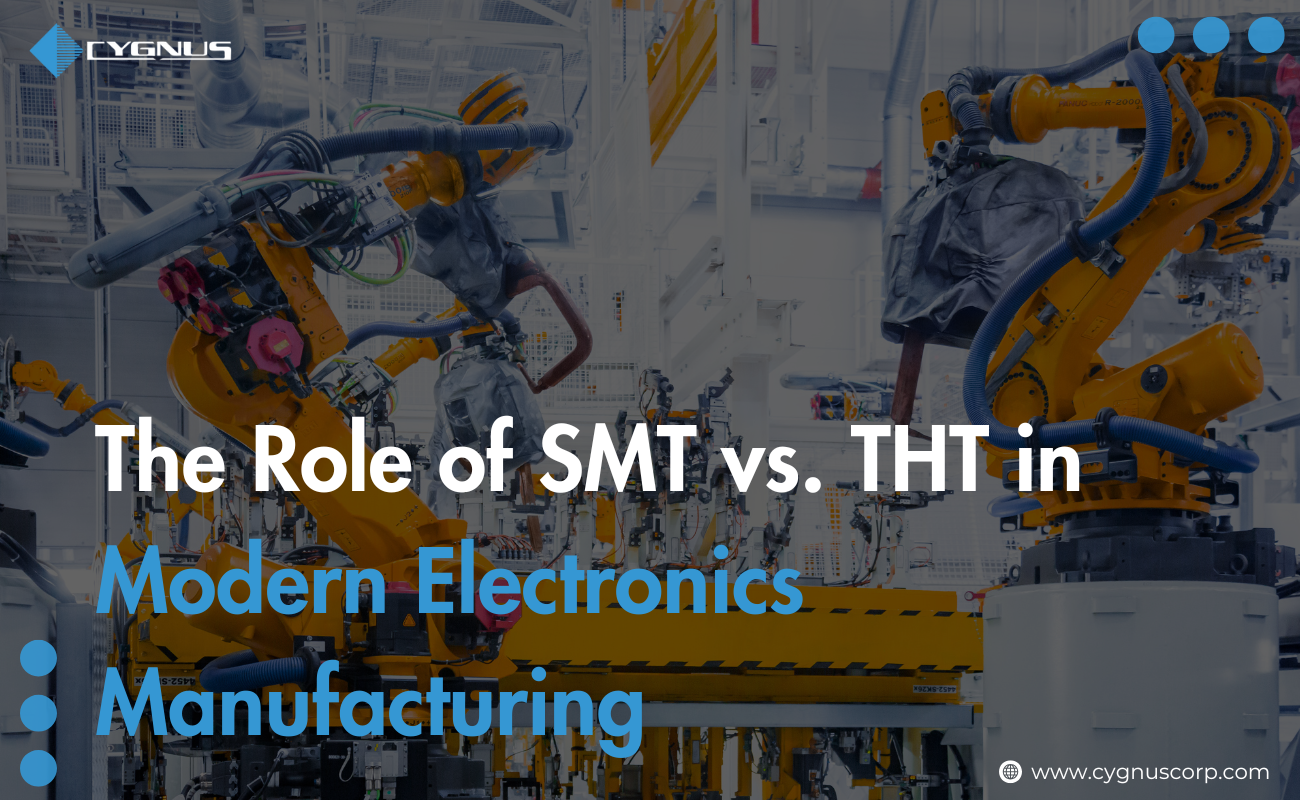When you hold a sleek smartphone or power up a high-performance gadget, you’re witnessing the result of intricate decisions made behind the scenes—especially when it comes to how those tiny components are mounted. At the heart of electronic product design lies a crucial question: surface mount technology vs through-hole technology—which one delivers the best performance, reliability, and cost efficiency?
It is important to understand role of SMT vs. THT isn’t just for engineers—it’s essential for anyone involved in bringing electronic products to life. As the race to create smaller, smarter, and faster devices intensifies, the choice of assembly method can make or break the final outcome. Let’s explore what sets these two technologies apart and how they shape the electronics we rely on every day.
What Are SMT and THT?
Surface Mount Technology (SMT) involves placing electronic components directly onto the surface of printed circuit boards (PCBs). These components, known as surface-mount devices (SMDs), are soldered using automated machines and reflow ovens.
Through-Hole Technology (THT), in contrast, uses components with leads that are inserted into drilled holes in the PCB and soldered from the opposite side. This method creates strong physical bonds between components and the board.
The Surface Mount Technology vs Through-Hole Technology debate isn’t just about tradition versus modernity—it’s about selecting the right fit for specific product requirements.
SMT in Modern Electronics Manufacturing
SMT has become the go-to choice in modern electronics manufacturing, particularly for high-volume production and compact product designs. Here’s why:
- High-Speed Automation: SMT is fully compatible with automated pick-and-place machines, increasing throughput.
- Component Miniaturization: Smaller SMDs allow for tighter layouts and multilayer boards.
- Lower Production Costs: With less manual labor and faster assembly, SMT reduces per-unit costs.
The advantages of SMT over THT are especially evident in products like smartphones, laptops, and wearable devices. These items demand lightweight, compact components and fast production cycles—areas where SMT excels.
Moreover, SMT in modern electronics enables the integration of complex circuitry into increasingly smaller form factors, supporting the global trend of miniaturization.
THT in Modern Electronics Manufacturing:
Despite the rise of SMT, THT continues to play an important role in applications where mechanical strength and durability are critical. The THT soldering process involves inserting component leads through the board and soldering them to pads on the opposite side.
Key THT electronics use cases include:
- Industrial control systems
- Automotive power electronics
- Aerospace and defense hardware
- Large transformers and connectors
THT is particularly valued for its ability to withstand mechanical stress, vibration, and high temperatures. While it is more labor-intensive and less suited for miniaturized designs, its reliability in rugged environments keeps it relevant in modern manufacturing workflows.
SMT vs. THT – Which One to Use When?
When deciding when to use SMT or THT, consider these key factors:
| Consideration | Recommended Technology |
| Compact design | SMT |
| High mechanical stress | THT |
| Automated, high-speed production | SMT |
| High power or voltage components | THT |
| Cost-sensitive high volumes | SMT |
| Prototype or industrial applications | THT |
The SMT vs THT difference often comes down to application environment, size constraints, and cost. However, many manufacturers now favor a hybrid PCB assembly approach—combining SMT and THT on the same board to leverage the strengths of both.
This method enables designers to place high-precision SMDs and robust THT components on a single PCB, ensuring durability without compromising performance.
Challenges in SMT and THT Assembly:
No manufacturing method is without its challenges. Let’s explore the common hurdles in each:
SMT Challenges:
- Solder Bridging: Can occur if solder paste is over-applied.
- Misalignment: Small component size increases placement sensitivity.
- Thermal Issues: Dense SMT layouts may lead to localized overheating.
THT Challenges
- Labor-Intensive: Requires more manual handling and inspection.
- Design Constraints: Drilled holes consume space and reduce routing options.
- Longer Production Times: The THT soldering process involves multiple stages, including hole preparation and lead trimming.
For businesses producing high-mix, low-volume products—or those requiring extra ruggedness—SMT vs THT in PCB manufacturing remains a critical decision that affects yield, cost, and quality.
Future Outlook – Will THT Eventually Disappear?
It’s unlikely that THT will completely disappear, despite the industry’s shift toward miniaturization and automation. THT continues to serve niche sectors that demand exceptional strength and thermal resilience.
However, SMT will continue to dominate mainstream applications due to the benefits of scale, automation, and space efficiency. The emergence of more compact and powerful components only strengthens SMT’s position.
Looking ahead, innovations such as embedded components, 3D circuit assembly, and even AI-assisted placement tools are transforming SMT in modern electronics. Still, THT is expected to retain a foothold in mission-critical systems like aerospace and power supply networks.
Many manufacturers are investing in systems that support hybrid PCB assembly to handle the increasing need for flexibility and functionality on a single board.
Final Thoughts:
Understanding the Role of SMT vs. THT helps electronics manufacturers make smarter choices during the product design and assembly stages. While SMT offers speed, cost-effectiveness, and space savings, THT provides superior strength for demanding environments.
The best solution isn’t always one or the other. Often, combining both techniques through hybrid PCB assembly delivers optimal performance, especially in complex electronics with diverse requirements.
Whether you’re producing consumer electronics or industrial systems, knowing the SMT vs THT difference allows you to balance design goals with real-world functionality. In today’s rapidly evolving market, adaptability is key—and manufacturers who master both SMT and THT are best positioned for long-term success.
FAQs
Q1: What is the key SMT vs THT difference?
SMT involves mounting components directly onto the PCB surface, while THT requires inserting leads through holes and soldering on the reverse side for added mechanical strength.
Q2: What are the advantages of SMT over THT?
SMT offers faster automated production, smaller component sizes, reduced costs, and higher circuit density—ideal for consumer and compact devices.
Q3: What are some common THT electronics use cases?
THT is often used in high-stress environments like automotive systems, industrial machinery, aerospace, and power electronics due to its superior durability.
Q4: Can both SMT and THT be used in the same PCB?
Yes, many designs employ hybrid PCB assembly, combining the efficiency of SMT with the robustness of THT to meet various technical needs.



